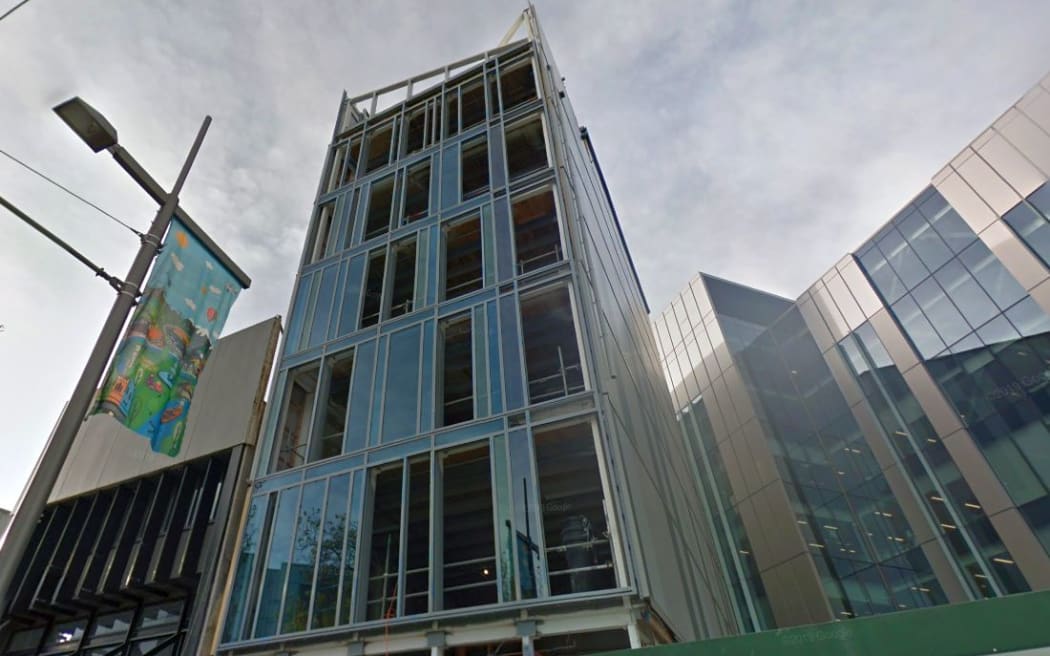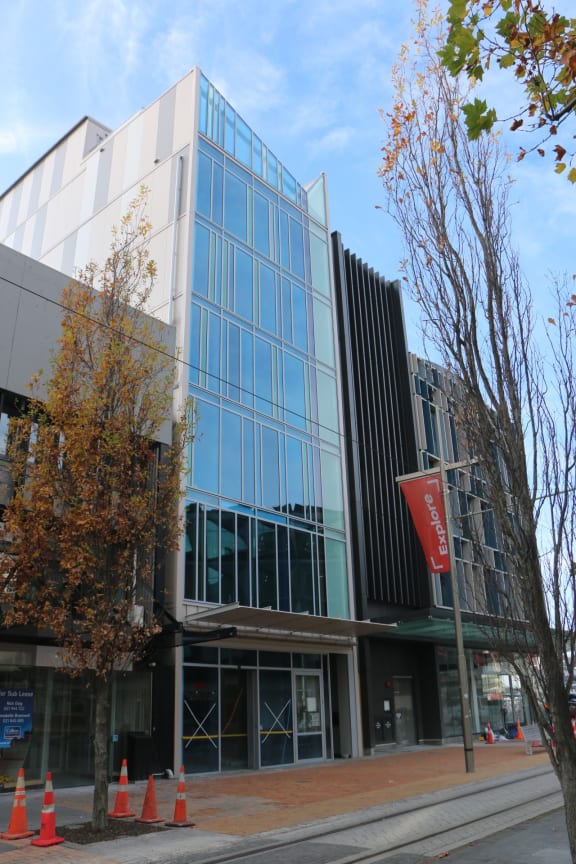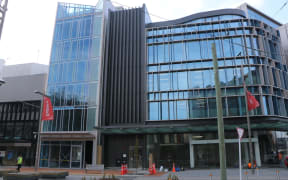Engineers have been meeting regulators in a dispute over a new Christchurch building that remains off-limits due to its earthquake design.

The building at 230 High Street, Christchurch, during its construction. Photo: Google Maps
The seven-storey building at 230 High Street in a central city mall has been faulted by three engineering companies, and defended by two other firms.
Documents show Miyamoto International NZ raised 64 issues in its peer review of the design by Seismotech Consulting, but in the end each was marked as "closed" in early 2017.
The Christchurch City Council said Miyamoto International called the latest meeting to discuss a report done for the Ministry of Business, Innovation and Employment.
MBIE said it was a technical meeting.
The ministry has yet to issue a determination that will decide the building's fate, 18 months after the first alert about it was raised by engineering firm Aurecon.

230 High Street Christchurch is the narrow, glass-fronted building in the centre. Photo: RNZ / Katie Todd
It took the city council nine months to call in MBIE.
During that time another brand-new building was constructed next door, limiting access, and 230 High Street was put on the market then withdrawn when the real estate agent learned about consenting issues - though he was not told about the seismic design dispute.
Seismotech's Joo Choo has defended the design to RNZ. Other engineering firms, including Aurecon and Beca, which reviewed the design for MBIE and found multiple serious faults with it, have refused to comment.
The Miyamoto review shows it challenged Seismotech about the building's earthquake resistance.
Miyamoto was concerned it was not very stiff.
"A quick check indicates the structure is irregular with torsional sensitivity," it said.
"We believe that it is not a very well configured building" because the shaking of a quake would be focused on its core, instead of the extremities as in a well configured building, its peer review said.
Miyamoto noted the Royal Commission into the Canterbury earthquakes had issued a warning about this.
"I don't think our structure is irregular," Mr Joo responded, but added he'd double-checked it anyway "and the results were positive".
Miyamoto's two reviewers - both of them seismic engineers - also protested that the amount the floors would "drift" in a quake exceeded the normal requirement of 2.5 percent.
Mr Joo said in his response, this was "still OK".
But the reviewers said: "In our view we cannot accept anything beyond 2.5 percent drift unless you provide some evidence that your approach is OK."
Miyamoto also wanted Mr Joo to use a second, better tool to analyse this.
The review used phrases such as "not acceptable" and "not conservative".
It warned Mr Joo that he would be "under-designing" if he checked the performance of the components of the frame one by one in a quake, without considering what these all added up to.
The review shows Mr Joo responded to all 64 points, but not exactly what he did about each of them.
This to-and-fro in late 2016 culminated in Miyamoto approving the design by issuing a Producer Statement for the design.
"The structure was considered irregular with torsional sensitivity," it summed up.
The extra analysis it wanted had been done, it said.
The designer had also made some changes to reduce the inter-storey drift to 2.5 percent, it said.
Miyamoto International has declined to comment to RNZ.




